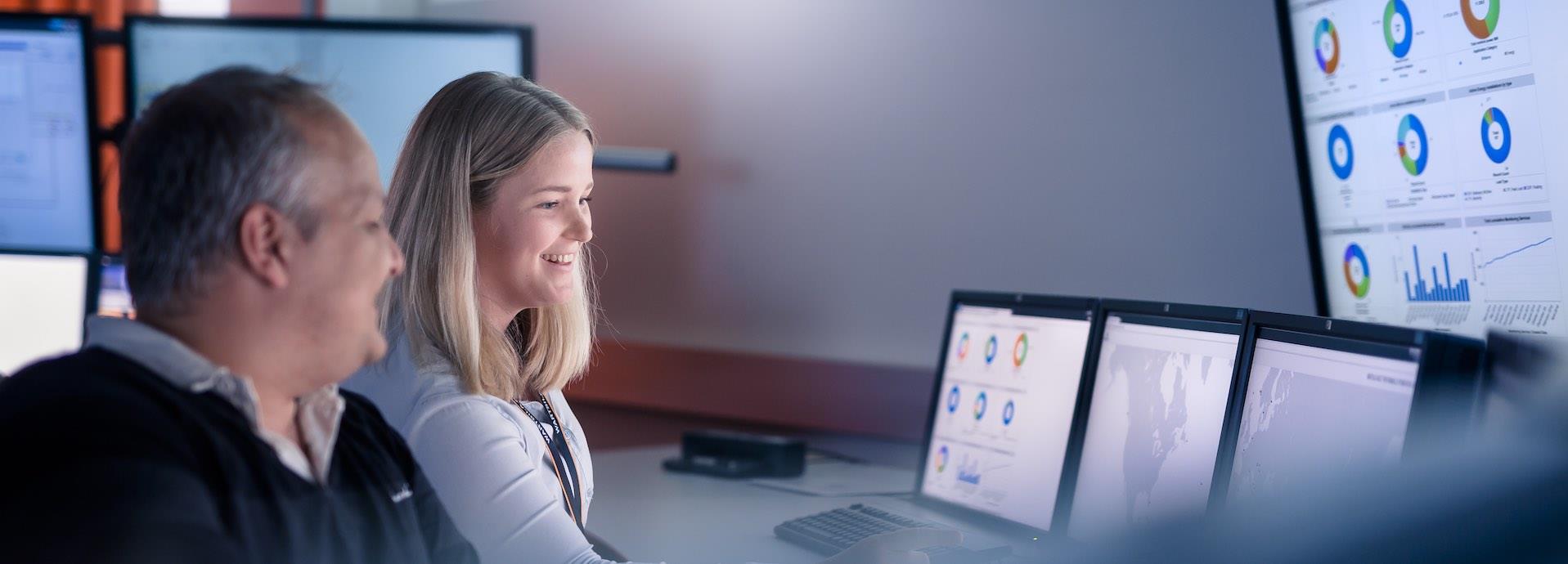

The coronavirus pandemic has exposed and accelerated underlying trends in remote working, global travel, technological advancement and AI. The most innovative companies are capitalising on these trends.
At the peak of the coronavirus pandemic in March 2020, some 2.6 billion people — a third of the world’s population — were under government-mandated lockdown and global travel was severely restricted. This presented huge technical challenges for companies, but it also provided a live, global test for remote working in a way that was unthinkable pre-crisis. As countries open back up, companies have to consider how or even if to bring back a scattered workforce.
“Change is the new normal,” says Patrik Strand, General Manager of Digital Product Management at Wärtsilä Marine Power.
“The nature of work has already changed dramatically in the last five years,” Strand notes, “but in the last quarter it has really made a huge leap. I don’t expect us to ever go back to working the way we were before Covid-19.”
Seizing opportunities and creating jobs
On 3 June, Wärtsilä launched a new remote support service backed by chat apps and video guidance and collaboration tools called Assured Operations. The round-the-clock service allows the company’s technical experts to assess and resolve operational issues on engines using a remote connection between vessels and staff manning Wärtsilä’s Expertise Centres. Some 90% of operating issues can be resolved remotely, removing the need for field-service technicians to visit ships in person and ensure fast resolution.
“With all the difficulties of physical access, we need more than ever to seize opportunities. Wärtsilä has over 185 years of history behind us, but we are always looking at how we can leverage emerging digital capabilities,” says Strand.
Along with remote assistance, technological advancements like automation and AI are top of most companies’ wish lists. But they bring with them some common fears about job losses.
A 2013 report by Oxford University academics Carl Benedikt Frey and Michael Osborne estimated that 47% of American jobs were at ‘high-risk’ of automation by the mid-2030s. Later, in 2019, McKinsey’s Global Institute found that by 2030, up to 160 million people may need to transition to higher-skilled occupations.
New research, however, has identified a different correlation between automation and jobs: While technology does indeed displace some workers, it creates many more opportunities than it removes.
According to LinkedIn’s 2020 Emerging Jobs report, AI Specialist is the fastest-growing position in the world’s 11 largest nations. Hiring growth has rocketed 74% a year since 2016.
But topping LinkedIn’s list of the fastest growing technology jobs roles is customer success operatives. These professionals need a hybrid of soft and hard skills, as they must understand new technology, but also manage customer relationships.
This is in line with a widely-cited 2018 report from the World Economic Forum, which concludes: “The future of work shows demand for a broad variety of skills that match these professional opportunities, inclusive of both disruptive technical skills but also specialized industry skills and core business skills.”
In short: agility and high-level customer service are as important now as they have ever been.
The human touch
Wärtsilä has actually been developing and using AI for the best part of a decade.
“The first time I was really amazed by an AI was actually with a product we have now,” says Frank Velthuis, Wärtsilä’s Director of Digital Product Development. “We had an early prototype in 2017 and I saw it could predict the operating parameters of an engine, extremely accurately.”
AIs are very good at carrying out narrow tasks like digging through and cross-referencing giant datasets.
Engines, for example, produce hundreds of operational datapoints continuously. It is implausible for humans to be able to record this information in real time and predict what may happen.
Making sense of these predictions though? This is where humans come in.
Velthuis explains: “We had been working for many years tuning the system, setting different rules and parameters. And it’s different for every engine. But the AI trains itself to predict these parameters. Then you feed it more data and it corrects itself again.”
When a single parameter appears out of line, the AI records an anomaly.
Wärtsilä’s technical experts can then analyse these anomalies and quickly conclude — remotely — that an injector is broken, or a turbocharger needs cleaning, for example.
“The AI is such an elegant solution,” says Velthuis. Far from destroying jobs or taking over human roles, AI actually streamlines work to make it more efficient.
This combination of the latest advancements in advanced analytics and AI and deep subject matter expertise offers extensive value-add for customers, something that has always been a priority for Wärtsilä.


